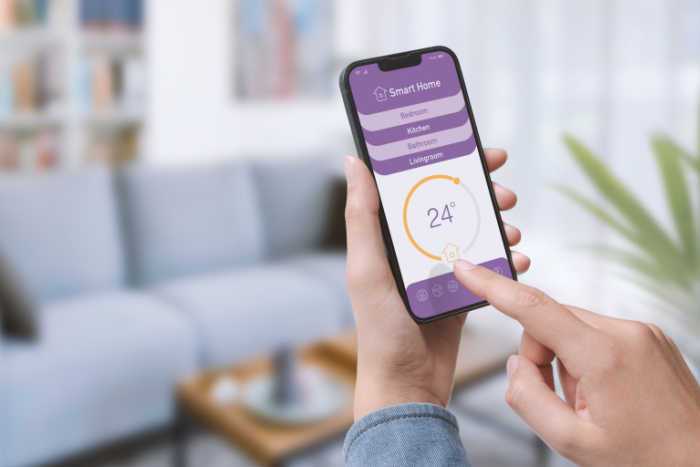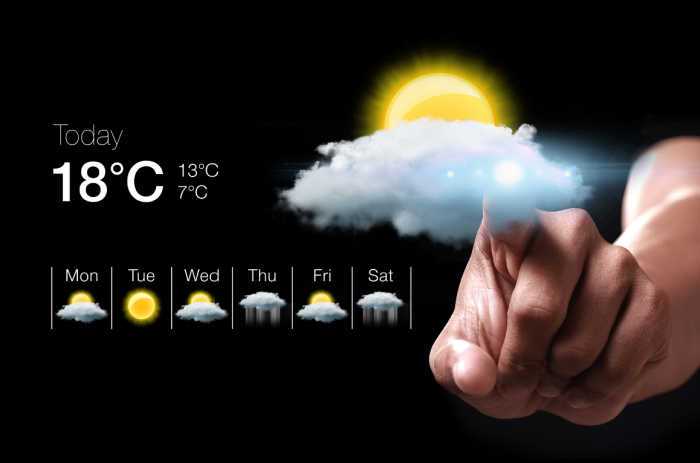Smart thermostats are the answer to more flexible temperature control. A step up from programmable thermostats, they not only enable time and temperature settings - they let you control your HVAC system remotely and come with a host of additional features to ensure a comfortable home environment.
They are not all made equal though. Some smart thermostats offer more functionality than others. The features you’ll need will all depend on the nature of your household and the lifestyles of the people who live there.
But before we go over what to look for in a smart thermostat, here’s an overview of how they operate.
Just like programmable thermostats, smart thermostats work by sensing your home’s ambient temperature and sending signals to your HVAC system to make changes according to your settings - like turning the system on and off at certain times, lowering temperatures when it gets too hot, and ramping them up when it’s too cold.

But a smart thermostat also allows you to control your home's temperature through an app on your phone, which is essentially what makes the technology smart.
All you need is a Wi-Fi connection at both ends (i.e. your home and wherever you are at the time) and you can control your HVAC system from anywhere. And that means you can save both energy and money by only having it running when you really need to.
It’s not just basic temperature settings you can control either. Depending on the model and the HVAC system it’s paired with, you can use a smart thermostat to set preferred humidity levels, track energy usage, input daily routines and much more besides.
There’s no shortage of smart thermostats on the market, and big name brands like Google, Hive and Honeywell all have their own versions of this temperature control technology.
To help you find the right tech for your home, here’s a look at some key features you may (or may not) require from your chosen model.
Multi-room/zonal control: many smart thermostats will have multi-room controls, allowing you to input different temperature settings for different zones at different times of the day. This is an excellent way to improve energy efficiency, particularly in the case of bigger homes where you may only use one part of the house for the majority of the time.
Draught detection: to prevent your HVAC system working harder than it needs to (and stop you wasting money), most smart thermostats are able to detect draughts and will typically send you a notification through the app to alert you to them.
Usage reports: some models provide you with usage data, helping you see where potential cost savings could be made. This data is usually generated on a monthly basis and will tell you how many hours you’ve spent heating or cooling your home so you can compare any changes with previous months.
GPS tracking: if you’re always on the go and have an unpredictable routine, this is a really handy feature to have. How it works varies. Some devices will track your location and adjust temperature settings based on whether you’re moving away or toward your home. Others will simply alert you if you’ve left your HVAC system running whilst you're out. You can then turn it off or make appropriate changes through the app.

Weather responsive functionality: if a smart thermostat is weather responsive, it can adjust internal temperatures based on the forecast and the temperature outside. So if a cold snap is on the way, or the sun’s about to come out, your HVAC system will automatically respond to keep your home comfortable.
Device compatibility: if you have other smart home technology you’ll usually be able to pair your thermostat. Most are compatible with Google Home and Amazon Echo devices, enabling voice control for your temperature settings.
Machine learning: some advanced smart thermostats go as far as to learn your temperature preferences. Simply adjust your settings as you normally would for the first few days and the thermostat will learn what your favoured conditions are and when, programming itself to suit. You can, of course, override this function.
Some smart thermostats advertise themselves as easy to install and safe in the hands of any competent DIYer. Bear in mind though that undertaking any work by yourself on an HVAC system may void its manufacturer warranty, and errors with electrics can be disastrous.
One of the best reasons to have your smart thermostat installed by a professional HVAC technician is to ensure your system works at maximum capacity. When it comes to installing a thermostat, placement and settings make a world of difference. If your thermostat is not in the proper location, its readings will not match your home’s actual temperature which could lead to higher heating and cooling bills and an uncomfortable indoor climate.
